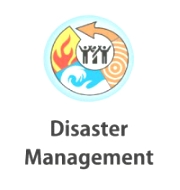India to host 2016 Asian Ministerial Conference for Disaster Risk Reduction
India is hosting the 2016 Asian Ministerial Conference for Disaster Risk Reduction (AMCDRR) from November 3 to 5, 2016 in New Delhi. This will be second time India hosting AMCDRR.
The conference will be hosted by Union Government in collaboration with the United Nations Office for Disaster Risk Reduction (UNISDR).
Key Facts
- It will be first AMCDRR after advent of Sendai Framework for Disaster Risk Reduction (SFDRRR) which was adopted at 3rd UN World Conference in Sendai, Japan in March, 2015.
- India by hosting AMCDRR re-affirms its commitment to the cause of Disaster Risk Reduction. It will also set the direction of Sendai Framework implementation in the region.
- The aim of the conference is to transform the commitments of governments and stakeholders during the Sendai Conference into national and local action.
- AMCDRR 2016 will focus on consultation, collaboration and partnership with governments and stakeholders to mainstream Disaster Risk Reduction (DRR) in the region.
- It will adopt the ‘Asian Regional Plan for Implementation of the Sendai Framework’ endorsed by the Asian countries.
- In this conference, senior-level delegations from Asian countries, representatives of UN bodies and Disaster Management experts will participate.
Background
AMCDRR is a biennial conference jointly organized by different Asian countries and the UNISDR. It was established in 2005. So far, 6 AMCDRR conferences have been organised. For the first time India had also hosted the second AMCDRR in 2007 in New Delhi.
About Sendai Framework for Disaster Risk Reduction 2015-30
- It is an international Treaty that was approved by UN member states in March 2015 at the Third World Conference on Disaster Risk Reduction held in Sendai, Japan.
- It is a voluntary and non-binding treaty which recognizes that the UN member State has the primary role to reduce disaster risk. It has framework for 15-year i.e. 2015 to 2020.
- It also calls for sharing the responsibility with other stakeholders including local government, the private sector and other stakeholders.
- It is successor of the Hyogo Framework for Action (2005–2015), which had been the most encompassing international accord on disaster risk reduction.
- It sets of common standards, a comprehensive framework with achievable targets, and a legally-based instrument for disaster risk reduction.
- It calls for adopting integrated and inclusive institutional measures for preventing vulnerability to disaster, increase preparedness for response and recovery and strengthen resilience.
- Four specific priorities of Sendai Framework: (i) Understanding disaster risk (ii) Strengthening disaster risk governance to manage disaster risk (iii) Investing in disaster risk reduction for resilience (iv) Enhancing disaster preparedness for effective response and recovery, reconstruction and rehabilitation.
Month: Current Affairs - October, 2016



